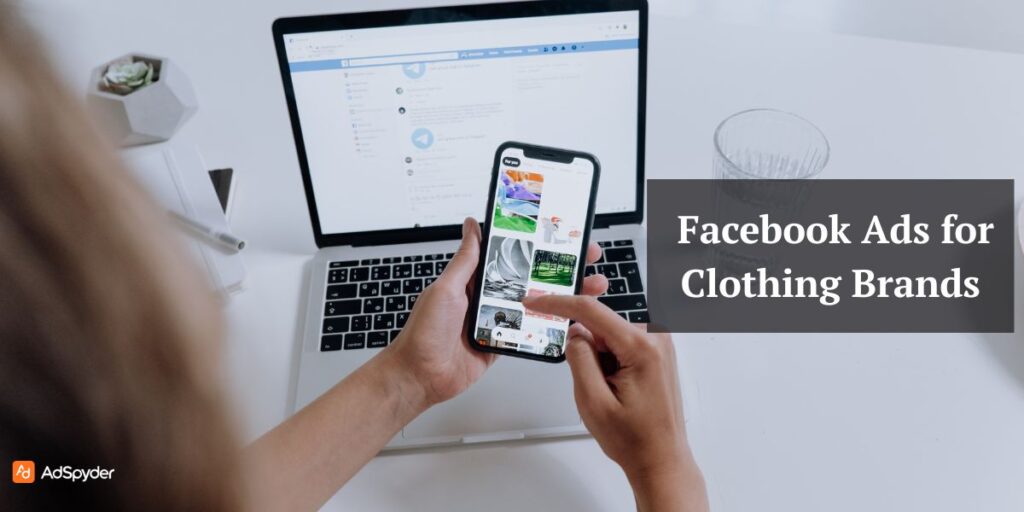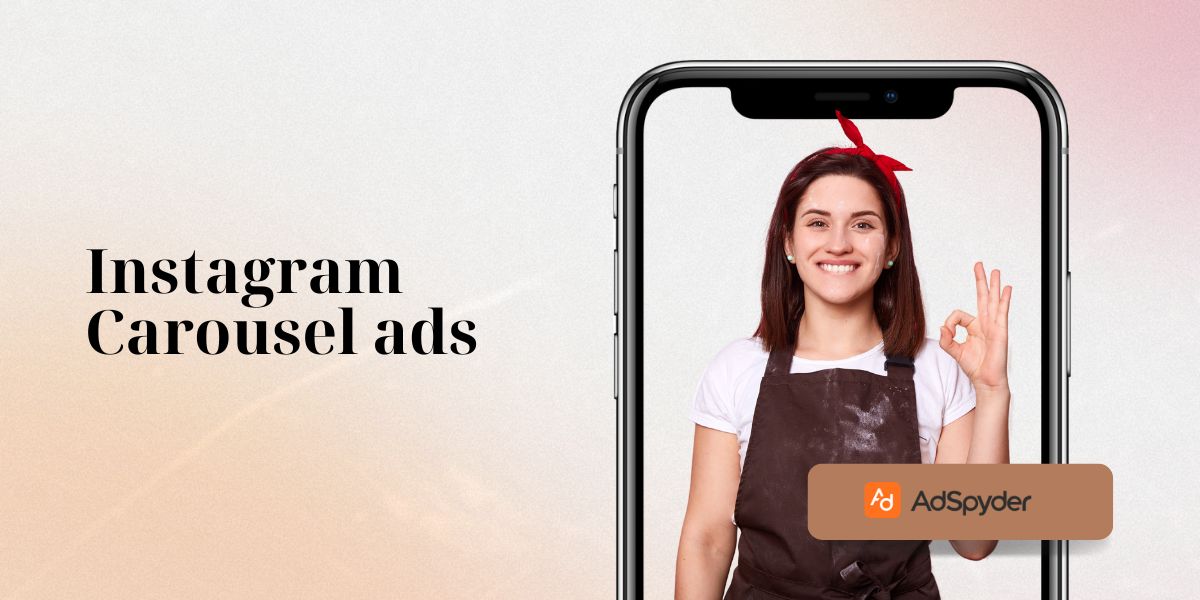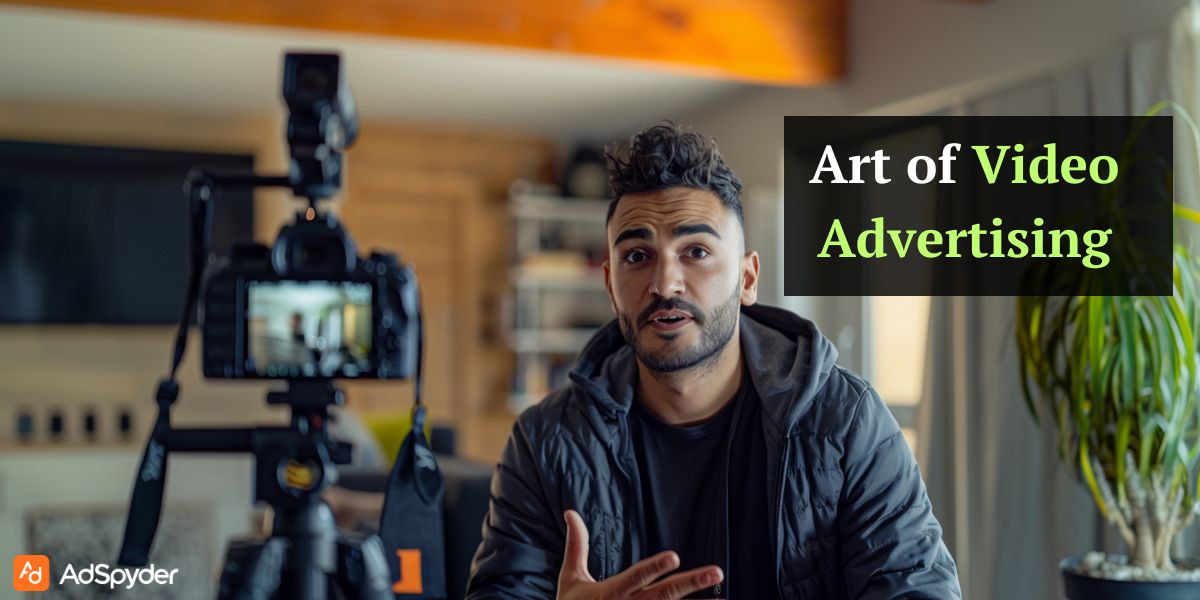There is intense rivalry in the rapidly expanding fashion market, and having a fantastic collection is not enough to stand out. One of the best ways for brands to reach the appropriate audience at the right moment is through Facebook Ads. Facebook gives apparel manufacturers a strong platform to display their designs, interact with potential customers, and increase conversions thanks to its more than 3 billion monthly active users. This blog will discuss audience targeting tactics, Facebook Ads for Clothing Brands , the reasons Facebook Ads are crucial for fashion businesses, and best practices to optimise ad performance.
Ready to Elevate your Marketing Strategy?
Facebook advertising gives fashion brands the ability to target particular demographics, guaranteeing that fashion-forward consumers who are most inclined to buy will see their ads. Facebook is the go-to advertising platform for apparel retailers because of its advanced targeting, variety of ad types, and smooth shopping integrations, whether you’re introducing a new collection, advertising a seasonal event, or simply aiming to boost awareness of your brand.
Why Clothing Brands Should Use Facebook Ads
Facebook Ads help clothing manufacturers increase their online visibility and efficiently reach specific customers. They help drive higher website traffic, improve user interaction, and boost sales by combining powerful data insights with visually appealing content.
1. Massive Audience Reach
Facebook’s extensive global user base and advanced targeting features allow clothing manufacturers to reach out to prospective customers based on their demographics, interests, and purchasing patterns. Instead of relying on broad exposure as traditional advertising does, Facebook allows businesses to target exactly those individuals who are most likely to interact and convert.
2. Advanced Targeting Options
Facebook enables apparel firms to prioritise their target market by offering substantial audience segmentation. Brands can target consumers based on:
- Gender and Age – Ensuring that advertisements are seen by members of the brand’s target audience.
- Behaviours and Interests – Reaching people who have a penchant for luxury apparel, athleisure, streetwear, and fashion, as well as shopping.
- Engagement history – Retargeting those who have interacted with prior advertisements, URLs, or social media posts.
3. Multiple Ad Formats to Showcase Apparel
Facebook advertisements give apparel manufacturers the opportunity to use dynamic and eye-catching forms, unlike static banner advertisements or print advertising. The platform offers clients rich and engaging experiences, ranging from shoppable collection advertisements to carousel ads that showcase various outfit combinations.
4. Seamless Shopping Experience
Facebook’s e-commerce tools, such as Instagram Shopping and Facebook Shops, simplify the purchasing process. Users may browse, save, and buy products straight from the advertisement without ever leaving the app when clothing brands connect their product catalogue.
5. Retargeting Capabilities to Recover Lost Sales
Many consumers peruse fashion items without buying anything right away. Brands can re-engage these individuals by displaying advertisements for the precise products they have previously viewed, added to their basket, or interacted with, thanks to Facebook’s retargeting functionality. This lowers abandoned cart losses and dramatically raises conversion rates.
Best Facebook Ad Types for Clothing Brands

To maximise engagement and conversions, the appropriate ad format must be chosen. Facebook provides various advertising formats specifically designed to meet the promotional needs of fashion labels and apparel businesses.
1. Image Ads
These are easy to use but quite powerful. An attention-grabbing title and call-to-action combined with a well-taken photo can generate interest right away. Image advertisements are excellent for:
- Promoting a single item or ensemble.
- Emphasising temporary sales or seasonal trends.
- Including lifestyle photos to show how clothes appear on different people.
2. Carousel Ads
Brands can utilise carousel advertisements to show several pictures or videos in one ad, each with a unique link. They are perfect for:
- Presenting several items from the same collection.
- Presenting various colour options available for a particular product to highlight its versatility and appeal.
- Developing detailed styling suggestions for outfits to motivate prospective customers.
3. Collection Ads
An immersive mobile shopping experience is offered via collection advertising, which consists of a main image or video followed by a number of product photos. Users can browse a variety of things on Facebook Instant Experience after clicking on the advertisement. This format works well for:
- Introducing fresh selections.
- Promoting carefully chosen fashion trends such as “Winter Streetwear” and “Summer Essentials”.
- Directing them to an online business or Facebook shop.
4. Video Ads
Video advertisements are among the most successful formats for fashion firms since they have a better engagement rate than static photos. These ads may consist of:
- Videos in the runway style demonstrate how clothing fits and moves.
- Showing the design and manufacturing process from behind-the-scenes footage.
- Content created by users that demonstrates how customers or influencers style the brand’s products.
5. Slideshow Ads
A lightweight substitute for video advertisements, slideshows combine several photos into an animated sequence. Compared to typical video ads, they consume less bandwidth, which makes them perfect for reaching users in places with slower internet or data-limited plans.
6. Dynamic Ads
Dynamic advertisements show products automatically according on past interactions and user preferences. Facebook’s dynamic retargeting advertisements will propose similar styles or display the identical product a potential buyer viewed on a website but did not buy.
7. Instant Experience Ads
Instant Experience advertisements, formerly known as Canvas advertisements, offer an interactive, full-screen, mobile-friendly experience. This format can be used by apparel companies to produce:
- Lookbooks that allow users to browse collections with immersive features.
- Clickable outfit guides feature direct shopping links, allowing users to instantly explore and purchase the showcased items.
- Behind-the-scenes brand narratives that emotionally connect with consumers.
Fashion firms may enhance ad engagement, generate more clicks, and eventually improve sales by selecting the appropriate ad format.
Related – Retargeting Ads for Fashion Shoppers
Targeting Strategies for Facebook Clothing Ads
For clothes manufacturers, a successful Facebook ad campaign demands precise audience targeting in addition to captivating language and eye-catching images. Brands can reach the appropriate consumers at the right moment using Facebook’s sophisticated targeting tools, which raises the possibility of conversions and sustained engagement.
1. Demographic Targeting
Clothing companies need to categorise their target market according to factors including region, economic level, gender, and age.
- Age & Gender: Focus on customers between the ages of 18-30 if your firm sells streetwear for young adults. An age range of 25 to 45 might be more appropriate if you specialise in high-end clothes.
- Location-Based Targeting: Advertisements from brands that provide local or worldwide shipping should be tailored according to the availability of shipping.
- Income Level & Purchase Power: While inexpensive fashion firms can concentrate on consumers with a limited budget, luxury brands should target high-income demographics.
2. Interest-Based Targeting
Facebook allows businesses to target customers based on their interests and online activities. Clothing companies ought to focus on consumers who interact with:
- Pages devoted to fashion, such as those from Vogue, GQ, and Fashion Week.
- Brands that share a common look or style.
- Online purchasing and business transactions.
Brands may prevent wasting ad spend on indifferent consumers by limiting targeting to fashion lovers and frequent shoppers.
3. Behavioural Targeting
Brands can target users based on their online activity and purchase patterns with Facebook’s behavioural targeting tools. Clothing companies ought to concentrate on:
- Frequent internet buyers who buy fashion products on a regular basis.
- People who interact with fashion content via viewing videos of clothes hauls or liking company sites.
- Event-based consumers, such as those seeking outfits for special occasions or seasonal clothing.
4. Lookalike Audiences
Brands can find new customers that exhibit similar behaviours and interests to their current clients by utilising Facebook’s Lookalike Audience tool.
- A list of previous consumers can be uploaded by clothing businesses, and Facebook will find users who have similar purchasing patterns.
- Since lookalike audiences target individuals who are already predisposed to buy trendy items, they boost the likelihood of engagement and conversions.
5. Retargeting Campaigns
Many fashion buyers peruse but do not purchase right away. Retargeting shows consumers personalised ads based on their previous browsing activities, preferences, or product interactions:
- Visited the website but made no purchases.
- They put items in their cart but did not check out.
- Engaged with earlier advertisements or posts on social media.
Retargeting ads can display:
- The precise item that a customer saw, prompting them to finish the transaction.
- Offers of discounts that are specifically tailored to promote conversion.
- Newcomers with similar interests to their previous ones.
6. Seasonal and Event-Based Targeting
By customising advertisements for particular events or fashion trends, clothing businesses may take advantage of seasonal demand.
- Wedding guest gowns, festival attire, winter coats, and summer collections can all be advertised ahead of time.
- Additionally, brands can use limited-time deals to target Cyber Monday, Black Friday, and holiday shoppers.
Clothing brands may improve relevance, engagement, and ad ROI by putting targeted audience segmentation into practice.
How to Create High-Converting Facebook Ads for Clothing Brands

Appealing language, well-optimised ad settings, and captivating images are essential components of a successful clothes advertising campaign. The key components of a Facebook ad that convert well are listed below.
1. Selecting Appropriate Images and Advertising Creatives
- Utilise lifestyle photos or high-resolution product photos that capture the brand’s aesthetic.
- Highlight unique qualities like premium fabrics, eco-friendliness, or custom designs.
- Simple photo backgrounds will highlight the products.
2. Writing Compelling Ad Copy and CTAs
- Headlines like “New Arrivals – Shop the Trend Before It Sells Out!” should be succinct and powerful.
- Choose CTAs that are obvious and action-oriented, such as “Shop Now,” “Get Yours Today,” or “Limited Stock – Order Now.”
- Phrases like “Just 50 pieces remaining!” can emphasise exclusivity, which fosters a sense of scarcity and speeds up decision-making.
3. Optimising Ads for Mobile Shopping
Given that most Facebook users browse on mobile devices, ads need to be responsive by design.
- Ad formats that are vertical (like Reels or Instagram Stories ads) can take up more screen space.
- Make sure landing pages load quickly so users will stay on them.
- Use easy-to-tap buttons and links for a seamless checkout experience.
4. A/B Testing Different Ad Elements
Brands should test several ad versions with minor modifications to see which ones work best in order to increase ad performance.
- Experiment with alternative CTA phrases, ad copy, and product photos.
- To determine which encourages greater engagement, compare collection advertisements vs carousel ads.
- Adjust your targeting settings based on data-driven insights gathered from how your ads are performing.
5. Ensuring Brand Consistency Across All Campaigns
- All advertisements should use the same brand’s typefaces, colours, and messaging.
- No matter if your tone is minimal, playful, or bold, ensure it stays consistent across all your content.
- Employing a signature style across all images will strengthen brand branding.
Clothing manufacturers may boost ad engagement, lower bounce rates, and increase conversions by implementing these tactics.
Best Practices for Facebook Clothing Ads
Uploading photos and writing a caption is not enough to run a successful Facebook marketing campaign. For their ads to have the most possible reach, engagement, and conversions, brands must optimise them. The main best practices for managing effective Facebook advertisements for apparel brands are listed below.
1. Use High-Quality Lifestyle Images and Videos
- Professionally taken images and videos help attract users in congested feeds.
- Lifestyle photos that include models wearing the clothes in authentic environments strengthen the bond with prospective customers.
- Videos include try-on hauls, behind-the-scenes footage, and runway pictures increase user engagement.
2. Offer Limited-Time Discounts to Create Urgency
- Time-limited promotions like “Get 20% off today only” or “Free shipping for 24 hours” immediately encourage purchases.
- Time-sensitive marketing strategies that increase conversions include flash discounts and seasonal specials.
3. Leverage Influencer and User-Generated Content (UGC)
- Trust is increased and credibility is added when influencers work together.
- Social media posts and actual customer evaluations are examples of UGC that give advertisements an authentic feel.
- Using real people in advertisements rather than models might increase relatability.
4. Utilise Facebook Shops for a Seamless Checkout Experience
- Customers may explore products and buy them straight from Facebook and Instagram thanks to Facebook Shops.
- Sales are increased and drop-offs are decreased when a seamless shopping experience is created.
- Users may easily access product details and pricing when products are tagged in advertisements.
5. Track Ad Performance and Modify Plans
- Monitor conversion rates, click-through rates (CTR), and cost per acquisition (CPA) to assess your progress.
- Analyse various audience groups to identify which segments yield the highest engagement or results.
- Change the positioning, wording, or graphics of the call to action to improve underperforming advertising.
Common Mistakes to Avoid in Facebook Ads for Clothing Brands

Even seasoned brands can make blunders that result in low engagement and wasted ad spend. Higher returns on investment (ROI) and improved ad effectiveness are guaranteed when these traps are avoided.
1. Poorly Targeted Ads Leading to Wasted Ad Spend
- Advertising without defining a clear audience segment can result in low-quality traffic.
- Employ interest-based targeting, behavioural segmentation, and Lookalike Audiences to refine advertisement reach.
2. Low-Quality Images or Videos Reducing Engagement
- Images that are blurry, grainy, or boring don’t draw in viewers.
- Make an investment in expert photography and make sure that product photos complement the aesthetics of your business.
3. Ignoring Mobile Optimisation in Ad Designs
- Ads must be structured for vertical viewing because more than 80% of Facebook users read on their phones.
- Make sure the photos are clear, the text readable, and the call-to-action buttons simple to tap.
4. Not Using Retargeting Campaigns to Recover Lost Leads
- Many visitors look at clothing labels but decide not to buy right away.
- Retarget consumers who have interacted with prior advertisements, added products to their cart, or viewed product pages.
5. Failing to Test Different Ad Creatives for Performance Improvements
- Showing the same advertisement repeatedly over a long stretch can cause viewers to become disengaged, leading to ad fatigue.
- To determine the most effective combination, test various iterations of the headlines, graphics, and ad types.
Clothing brands may boost conversions, increase ad spend ROI, and improve ad efficiency by avoiding these blunders.
Conclusion for Facebook Ads for Clothing Brands
Facebook Ads give apparel companies a strong, data-driven marketing tool to increase sales by reaching the correct demographic. Fashion firms may develop successful campaigns that captivate customers and increase conversions by utilising cutting-edge shopping features, superior imagery, and targeted ad methods.
To achieve long-term success, brands should:
- Employ eye-catching advertising creatives that are consistent with their brand.
- With accurate ad targeting, target the appropriate audience segments.
- Retargeting techniques can be used to reconnect with prospective clients who did not convert at first.
- Make shopping on mobile devices as easy as possible.
- To increase efficacy, evaluate your advertising outcomes on a regular basis and make adjustments in light of the new information.
Clothing brands may improve their Facebook Ads performance, raise their brand awareness, and boost sales by adhering to these best practices.
FAQs on Facebook Ads for Clothing Brands
Which Facebook advertisements are most effective for clothing brands?
Collection, carousel, and video advertisements are the most effective ways to showcase fashion items.
What are some ways to better target the right audience with my clothing advertisements?
Using interest-based, behavioural, and demographic targeting is the answer. Also, leveraging lookalike and remarketing audiences helps expand your reach effectively.
How much should I spend on clothes advertisements on Facebook?
Start with a $10–$50 daily test budget and increase it in accordance with ad results.
Which images work best for adverts for clothing?
Professional product photography, flatlays, and lifestyle photos of the highest calibre.
How can I improve interaction on my ads for apparel brands?
Use interactive formats like videos, influencer content, and user-generated content.
How can I lower Facebook ad expenses while boosting return on investment?
A/B test various ad creatives, employ retargeting advertisements, and optimise audience targeting.
Which CTA operates best for fashion advertisements?
“Shop Now,” “Explore the Collection,” and “Limited Stock – Buy Now” are examples of CTAs that increase conversions.




